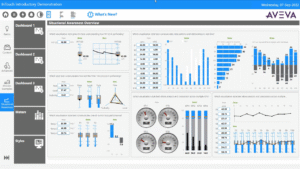Trends in Customer Service Outsourcing for 2025
Customer expectations are rising, and businesses need support models that are fast, reliable, and flexible.

In today’s service-focused economy, delivering excellent customer support can make or break a brand. As we move through 2025, more businesses are turning to Customer Service Outsourcing to ensure timely, effective, and cost-efficient assistance. This shift is being driven by evolving customer expectations and the growing need for operational flexibility. With rising competition across sectors, brands must prioritize responsiveness, accessibility, and customer satisfaction—making outsourcing not just a cost-saving tactic but a long-term strategy for service excellence.
Shift Toward Omnichannel Support
Customers no longer rely on a single mode of communication. Whether it’s social media, email, live chat, or phone calls, they expect brands to be available everywhere. Businesses are responding by Customer Service Outsourcing customer support to providers that offer true omnichannel service. This ensures a smooth and consistent experience no matter how a customer chooses to reach out.
Focus on Personalization
Another trend shaping outsourcing in 2025 is the emphasis on tailored customer experiences. Outsourcing providers are using customer data to deliver more relevant interactions. Agents are trained to access order history, preferences, and past conversations. This leads to better problem-solving and stronger relationships with customers.
AI and Automation as Support Tools
Automation is playing a growing role in outsourced support, but it’s not replacing human agents. Instead, companies are using AI tools like chatbots to handle simple tasks—such as answering FAQs or updating account information—while human agents tackle more detailed concerns. This mix improves efficiency without losing the human touch.
Emphasis on Quality and Training
Many businesses now expect their outsourced teams to perform at the same level as internal staff. As a result, service providers are investing heavily in training. There’s a clear focus on communication skills, product knowledge, and empathy. This ensures the outsourced agents are well-prepared to represent the brand.
Nearshoring and Regional Outsourcing Growth
Companies are also looking closer to home when choosing outsourcing partners. Nearshoring—working with teams in nearby regions—is gaining traction due to reduced time zone differences and fewer cultural barriers. This approach supports faster response times and improved collaboration.
Increased Demand for Call Center Outsourcing in Niche Sectors
Industries such as healthcare, fintech, and SaaS require agents who understand complex products and regulations. As a result, there’s growing interest in call center outsourcing that includes industry-specific expertise. Vendors are offering agents with background knowledge and certification in specific domains to ensure accurate and helpful support.
Data Security and Compliance Becoming Key Priorities
With rising concerns about data protection, businesses are selecting partners with strong cybersecurity measures. Outsourcing providers are expected to comply with standards like GDPR and HIPAA, depending on the client’s industry. Trust and transparency have become non-negotiable in the outsourcing relationship.
Conclusion
Customer expectations are rising, and businesses need support models that are fast, reliable, and flexible. The trends in customer service outsourcing for 2025 point to a balanced use of technology and people, greater attention to training, and a sharp focus on regional compatibility and data security. As a strategy, outsourcing continues to evolve—and remains a smart move for businesses aiming to stay competitive.





